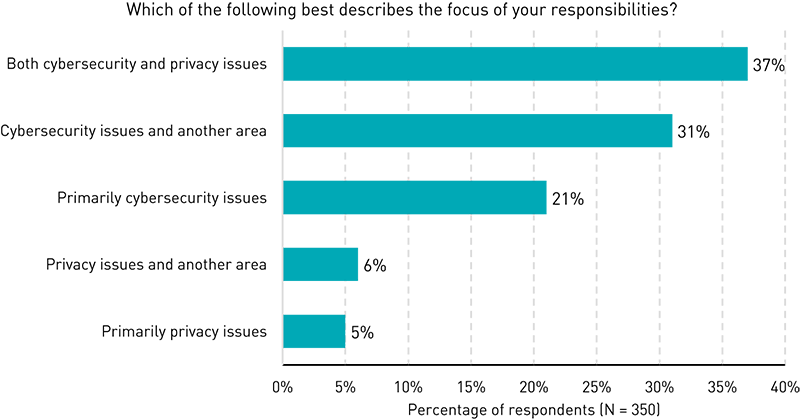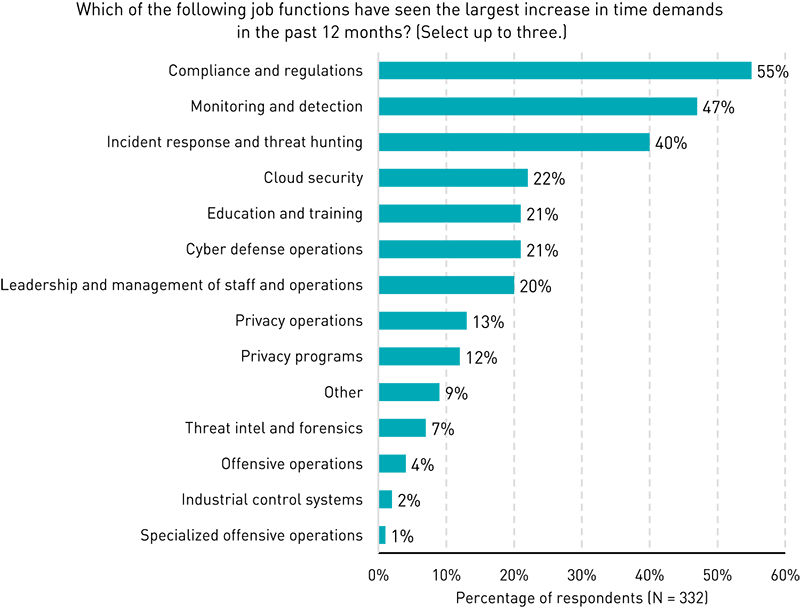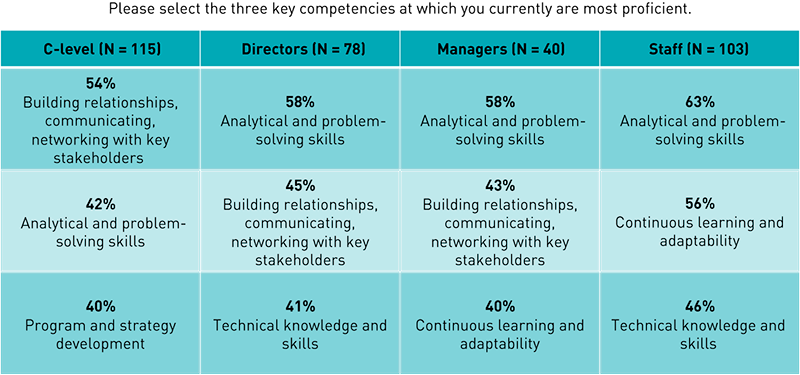The Cybersecurity and Privacy Workforce in Higher Education, 2023
Want to share this report? Use our toolkit.
Following the COVID-19 pandemic, a number of workforce domains in higher education saw significant shifts in focus, reductions in staff size, and structural reorganizations. Now, several years out from the onset of the pandemic, we are taking a look at the current state of affairs, gauging whether the higher education workforce has continued to shift, shrink, or reorganize, in addition to exploring other timely and relevant workforce issues.
The data in this report are taken from a survey of cybersecurity and privacy professionals in higher education, conducted in July 2023, representing 350 respondents from different position levels at their institution.
This report is the first in a series examining specific workforce domains (cybersecurity and privacy, teaching and learning, and IT) in higher education. Explore our other Workforce Reports when they become available in early 2024.
Respondent Composition

Responsibilities often fall across multiple functional areas. Some of the areas that respondents identified included IT services and infrastructure, compliance, network infrastructure, enterprise services, system and data management, identity and access management, and administration.
Read more about the respondent composition >
Structure, Size, and Reporting Lines

The cybersecurity workforce is more robust than the privacy workforce.
Learn more about structure, size, and reporting lines >
Staffing and Budgets

Respondents called for improvements to salaries, budgets, and development opportunities.
Read more about staffing and budgets >
Work Role Experiences

Compliance and regulations have seen the largest increase in time demands.
Learn more about work role experiences >
Competencies and Professional Development

Proficiency in particular competencies was somewhat similar among different position levels.
Learn more about competencies and professional development >
More Workforce Resources
This report is the first in a series examining specific workforce domains (cybersecurity and privacy, teaching and learning, and IT leadership) in higher education.
Explore other technology workforce reports (coming early 2024) >
Reports and Supporting Materials

